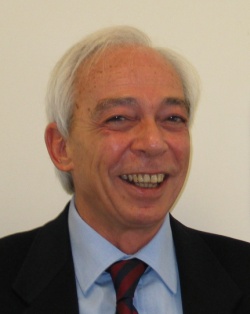
Peking University Overseas Distinguished Scholar Lectures--Recent development in Scientific Computing
Speaker(s):Franco Brezzi, Istituto Universitario di Studi Superiori (IUSS) Italy
Time:2016-12-07
Venue:No.1 Science Building

Professor Franco Brezzi works on the theoretical bases of Scientific Computing, in particular in Numerical Methods for Partial Differential Equations, where he has made fundamental contributions to Mixed Finite Element Methods, Mimetic Finite Differences, or Virtual Elements of problems related to Structural Mechanics, Fluid Mechanics, and Electro-Magnetics, including algorithms and theories. He was awarded the Gauss-Newton gold medal of the International Association for Computational Mechanics of the World Congress of Computational Mechanics in 2004, SIAM von Neumann award in 2009, and the Leonhard Euler Medal and the Ritz-Galerkin Medal of the European Community on Computational Methods in Applied Science in 2014 and 2016, respectively. Professor Franco Brezzi was an Invited Plenary Speaker at the ICM in 2014 in Seoul, and an Invited Speaker at the ICM in 1986 in Berkeley. He had been President of the Italian Mathematical Union from 2006 to 2012, and is currently Vice President of the European Mathematical Society. Also he is a member of the European Academy of Sciences, and a fellow of the International Association of Computational Mechanics and of the Society for Industrial and Applied Mathematics.
Titles and Abstracts
Public Lecture: Recent development in Scientific ComputingAfter a short presentation of Scientific Computing, of its problems and its typical results, we recall some fundamental equations ruling the mathematical representation of most “real-life” problems. Going more into details, we consider their “Variational Formulation”, and the Ritz-Galerkin approach for the computation of an approximate solution. Further into details, we present the approximations based on a decomposition of the computational domain into “elements” (that is, tiny pieces of the domain: more and smaller pieces for a more accurate result). Among them we concentrate on the approximations based on decompositions made of elements of more complicated geometries, instead of the commonly used simplexes and boxes (in two dimensions: triangles and quadrilaterals). We discuss pros and cons of these choices, the theoretical and practical difficulties, and the expectations that made the subject so popular in the very last years. At the final level of detail, we present the Virtual Element Method, introduced about three years ago, and discuss some of its main features.
Technical Lecture 1: Nodal Virtual Element MethodsWe recall the (very recent) Virtual Element Method as applied to some simple model problems. We discuss the interest of polytopal decompositions, and their possible pros and cons. Then we consider some of their variants, and different types of stabilizations. Finally we introduce the so-called Serendipity approach, its variants, and its difference with respect the static condensation.
Technical Lecture 2: Face and Edge Virtual Element MethodsWe recall the Virtual Element approximations of H(div)- and H(curl)-conforming spaces, typically used to approximate (n-1)-differential forms and 1-differential forms, respectively. We compare them to the most popular Raviart-Thomas, Nédélec, and BDM spaces, in particular in the presence of distorted elements, and we describe their application to some simple model problem (Darcy flows, magnetostatics, etc). Finally, we introduce their Serendipity variants to reduce the number of degrees of freedom (in particular for three-dimensional problems)
Dates and Venues:
Public Lecture: 11:00am-12:00am, December 9, 2016, Moonlight Hall, Overseas Exchange CenterTechnical
Lecture 1: 9:00am-11:00am, December 7, 2016, Lecture Room 1114, No.1 Science BuildingTechnical
Lecture 2: 9:00am-11:00am, December 7, 2016, Lecture Room 1114, No.1 Science Building
Organizers: Jun Hu (Peking University, China), Jinchao Xu ( Pen State University, USA, & Peking University, China)
Sponsors: Office of International RelationsSchool of Mathematical Sciences, Peking UniversityBeijing International Center for Mathematical ResearchNSFC
Contact: Miss Baomei Li Email: libm@math.pku.edu.cn Tel: 62745950
